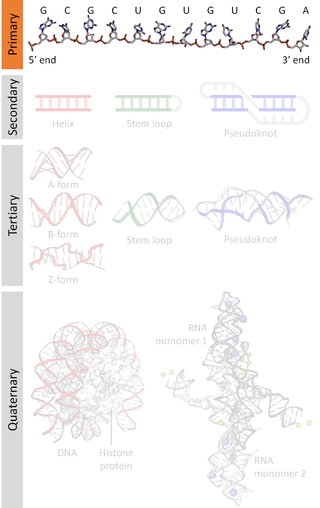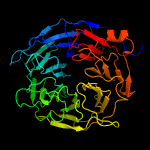| Tools | Description | External resources use | WebsiteURL | References |
|---|
| PhyreRisk | Maps genetics variants onto experimental and predicted protein structures | Variant effect predictor, UniProt, Protein Data Bank, SIFTS, Phyre2 for predicted structures | http://phyrerisk.bc.ic.ac.uk/home | [25] |
| Missense3D | Reports structural impact of a missense variant onto PDB and user-supplied protein coordinates. Developed to be applicable to experimental and predicted protein structures | Protein Data Bank, Phyre2 for predicted structures | http://www.sbg.bio.ic.ac.uk/~missense3d/ | [26] |
| SNPeff | SnpEff annotates variants based on their genomic locations and predicts coding effects. Uses an interval forest approach | ENSEMBL, UCSC and organism based e.g. FlyBase, WormBase and TAIR | http://snpeff.sourceforge.net/SnpEff_manual.html | [27] |
| Ensembl VEP | Determines effects of variants (SNPs, insertions, deletions, CNVs or structural variants) on genes, transcripts, proteins and regulatory regions | dbSNP, RefSeq, UniProt, COSMIC, PDBe, 1000 Genomes, gnomAD, PubMed | https://www.ensembl.org/info/docs/tools/vep/index.html | [28] |
| ANNOVAR | This tool is suitable for pinpointing a small subset of functionally important variants. Uses mutation prediction approach for annotation | UCSC, RefSeq and Ensembl | http://annovar.openbioinformatics.org/ | [29] |
| Jannovar | This is a tool and library for genome annotation | RefSeq, Ensembl, UCSC, etc. | https://github.com/charite/jannovar | [30] |
| PhD-SNP | SVM-based method using sequence information retrieved by BLAST algorithm. | UniRef90 | http://snps.biofold.org/phd-snp/ | [31] |
| PolyPhen-2 | Suitable for predicting damaging effects of missense mutations. Uses sequence conservation, structure to model position of amino acid substitution, and SWISS-PROT annotation | UniProt | http://genetics.bwh.harvard.edu/pph2/ | [32] |
| MutationTaster | Suitable for predicting damaging effects of all intragenic mutations (DNA and protein level), including InDels. | Ensembl, 1000 Genomes Project, ExAC, UniProt, ClinVar, phyloP, phastCons, nnsplice, polyadq (...) | http://www.mutationtaster.org/ | [33] |
| SuSPect | An SVM-trained predictor of the damaging effects of missense mutations. Uses sequence conservation, structure and network (interactome) information to model phenotypic effect of amino acid substitution. Accepts VCF file | UniProt, PDB, Phyre2 for predicted structures, DOMINE and STRING for interactome | http://www.sbg.bio.ic.ac.uk/suspect/index.html | [34] |
| F-SNP | Computationally predicts functional SNPs for disease association studies. | PolyPhen, SIFT, SNPeffect, SNPs3D, LS-SNP, ESEfinder, RescueESE, ESRSearch, PESX, Ensembl, TFSearch, Consite, GoldenPath, Ensembl, KinasePhos, OGPET, Sulfinator, GoldenPath | http://compbio.cs.queensu.ca/F-SNP/ | [35] |
| AnnTools | Design to Identify novel and SNP/SNV, INDEL and SV/CNV. AnnTools searches for overlaps with regulatory elements, disease/trait associated loci, known segmental duplications and artifact prone regions | dbSNP, UCSC, GATK refGene, GAD, published lists of common structural genomic variation, Database of Genomic Variants, lists of conserved TFBs, miRNA | http://anntools.sourceforge.net/ | [36] |
| SNPit | Analyses the potential functional significance of SNPs derived from genome wide association studies | dbSNP, EntrezGene, UCSC Browser, HGMD, ECR Browser, Haplotter, SIFT | -/- | [37] |
| SCAN | Uses physical and functional based annotation to categorize according to their position relative to genes and according to linkage disequilibrium (LD) patterns and effects on expression levels | -/- | http://www.scandb.org/newinterface/about.html | [38] |
| SNAP | A neural network-based method for the prediction of the functional effects of non-synonymous SNPs | Ensembl, UCSC, Uniprot, UniProt, Pfam, DAS-CBS, MINT, BIND, KEGG, TreeFam | http://www.rostlab.org/services/SNAP | [39] |
| SNPs&GO | SVM-based method using sequence information, Gene Ontology annotation and when available protein structure. | UniRef90, GO, PANTHER, PDB | http://snps.biofold.org/snps-and-go/ | [40] |
| LS-SNP | Maps nsSNPs onto protein sequences, functional pathways and comparative protein structure models | UniProtKB, Genome Browser, dbSNP, PD | http://www.salilab.org/LS-SNP | [41] |
| TREAT | TREAT is a tool for facile navigation and mining of the variants from both targeted resequencing and whole exome sequencing | -/- | http://ndc.mayo.edu/mayo/research/biostat/stand-alone-packages.cfm | [42] |
| SNPdat | Suitable for species non-specific or support non-model organism data. SNPdat does not require the creation of any local relational databases or pre-processing of any mandatory input files | -/- | https://code.google.com/p/snpdat/downloads/ | [43] |
| NGS – SNP | Annotate SNPs comparing the reference amino acid and the non-reference amino acid to each orthologue | Ensembl, NCBI and UniProt | http://stothard.afns.ualberta.ca/downloads/NGS-SNP/ | [44] |
| SVA | Predicted biological function to variants identified | NCBI RefSeq, Ensembl, variation databases, UCSC, HGNC, GO, KEGG, HapMap, 1000 Genomes Project and DG | http://www.svaproject.org/ | [45] |
| VARIANT | VARIANT increases the information scope outside the coding regions by including all the available information on regulation, DNA structure, conservation, evolutionary pressures, etc. Regulatory variants constitute a recognized, but still unexplored, cause of pathologies | dbSNP,1000 genomes, disease-related variants from GWAS, OMIM, COSMIC | http://variant.bioinfo.cipf.es/ | [46] |
| SIFT | SIFT is a program that predicts whether an amino acid substitution affects protein function. SIFT uses sequence homology to predict whether an amino acid substitution will affect protein function | PROT/TrEMBL, or NCBI's | http://blocks.fhcrc.org/sift/SIFT.html | [47] |
| LIST-S2 | LIST-S2 (Local Identity and Shared Taxa, Species-specific) is based on the assumption that variations observed in closely related species are more significant when assessing conservation compared to those in distantly related species | UniProt SwissProt/TrEMBL and NCBI Taxonomy | https://gsponerlab.msl.ubc.ca/software/list/ | [48] [49] |
| FAST-SNP | A web server that allows users to efficiently identify and prioritize high-risk SNPs according to their phenotypic risks and putative functional effects | NCBI dbSNP, Ensembl, TFSearch, PolyPhen, ESEfinder, RescueESE, FAS-ESS, SwissProt, UCSC Golden Path, NCBI Blast and HapMap | http://fastsnp.ibms.sinica.edu.tw/ | [50] |
| PANTHER | PANTHER relate protein sequence evolution to the evolution of specific protein functions and biological roles. The source of protein sequences used to build the protein family trees and used a computer-assisted manual curation step to better define the protein family clusters | STKE, KEGG, MetaCyc, FREX and Reactome | http://www.pantherdb.org/ | [51] |
| Meta-SNP | SVM-based meta predictor including 4 different methods. | PhD-SNP, PANTHER, SIFT, SNAP | http://snps.biofold.org/meta-snp | [52] |
| PopViz | Integrative and interactive gene-centric visualization of population genetics and mutation damage prediction scores of human gene variants | gnomAD, Ensembl, UniProt, OMIM, UCSC, CADD, EIGEN, LINSIGHT, SIFT, PolyPhen-2, | http://shiva.rockefeller.edu/PopViz/ | [23] |












